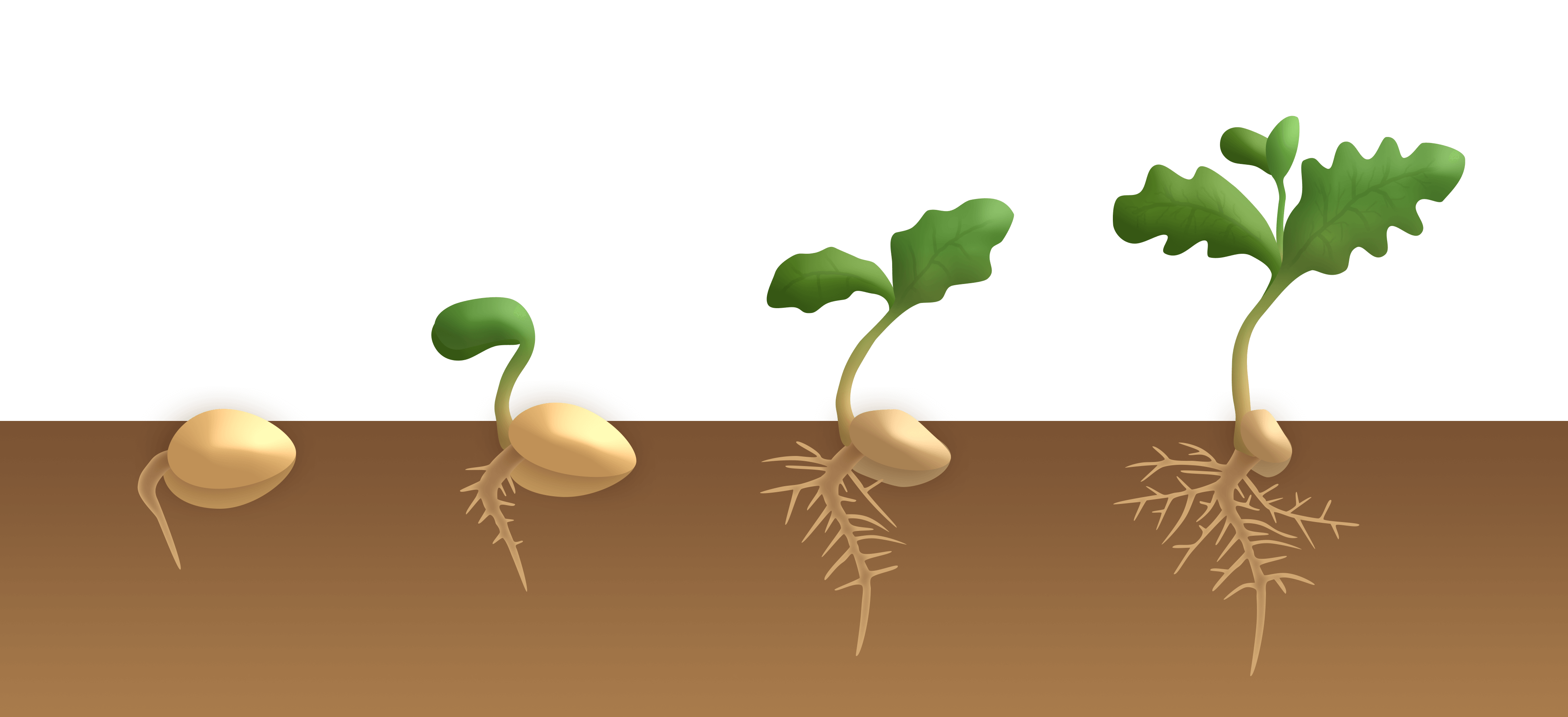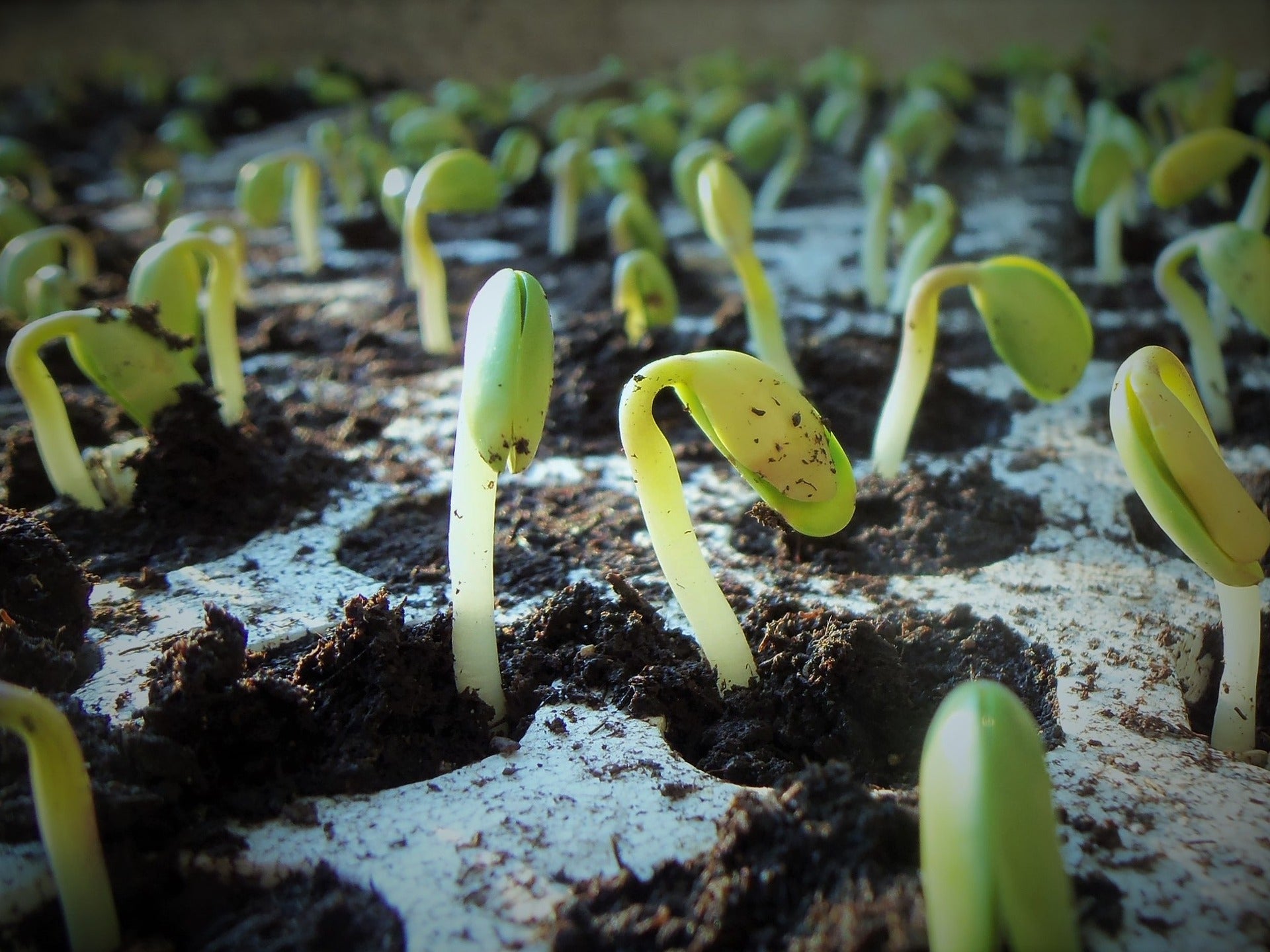Seed Germination - what does it mean? | Fontana Seeds
The oft-cited phrase ‘buy cheap, pay dear’ is especially relevant when it comes to buying seeds. Cheap seeds, as tempting as they may be, really are a false economy and the reason for this boils down to a few simple factors.
Germination Rate
The first main factor is the all-important ‘germination rate’. Germination is the term for the evolution that takes place when a seed becomes a seedling. This incredible transition occurs when the seed absorbs moisture at the appropriate temperature to convert stored starch and protein into useable energy and jolt it out of dormancy. A series of metabolic processes then causes the seed to swell and put down the first tiny roots, followed by the unfurling of its seed leaves –known as cotyledon. Not all seeds are successful at this transition stage, and this is where we discover the germination rate. In a batch of seeds with good germination most will sail through this process, so if say, 85 out of 100 seeds make it, that seed batch would have a germination rate of 85%.
What determines the germination rate boils down to myriad factors that come into play long before the seeds have been put on the market. For example, as seeds age, their germination rate decreases exponentially over time due to the seed relying on its stored energy to stay alive.
Germination potential falls due to a number of reasons including starting vigour, seed type, and care in storage – although no matter how well seeds are looked after, eventually they will deteriorate and there is nothing that can be done.
Reputable seed sellers want the highest possible germination rate for their seeds because high - germination seeds perform better for their customers. Seed sellers are legally required to regularly test their seeds’ germination, and the seeds must meet certain minimums to be sold. The seed house will test seed germination under optimum controlled conditions that include moisture, light and temperature, thereby giving the seed every possible opportunity to sprout. Professional growers and seed buyers in the know look carefully at the results of these germination tests before buying large quantities of seed.
Seed Vigour
Whilst germination rate is easily defined, the equally important seed ‘vigour’ is not a single measurable property; rather it is a sum or combination of properties of the seed that determines its potential for high performance. In essence, it’s the ability, potency and energy of the seed. All seeds that have vigour germinate well, but not all seeds that germinate have vigour.
In realistic conditions such as the field or garden and away from the optimum testing conditions of a lab, quality of vigour leads to seedlings that are less prone to being attacked by pests and falling foul of disease, thus more likely to grow swiftly and healthily. A vigorous plant is more capable of thriving in and withstanding an imperfect environment.
Hybrid seeds are extremely consistent and tend to be highly vigorous. On the opposite end of the scale, however, seeds that have a low germination rate – even a rate just touching the legal minimum for their type – are simply not vigorous. Outside the optimum conditions of a lab setting and in a real-life situation – your garden for example – these seeds will often fail.
As touched on before, the conditions in the real world are quite different to the optimum settings of the testing lab. Seeds that have a 95% germination rate may in fact sprout under excellent field conditions at just 65% or slightly above. Seeds with an 85% lab germination rate might actually germinate at 50%. Seeds with a 75% germination rate may only have a practical germination rate of 15%. These figures all assume the field conditions are excellent. If the field conditions are reduced from ‘excellent’ to merely ‘good’, then the figures drop considerably.
Which brings us back to the adage, ‘buy cheap, pay dear’. You may well be buying more seeds for your money, but you will end up with a far smaller yield per pound spent.
Who pays the price of cheap seeds?
Ultimately it is the hobby gardeners who end up paying the cost. Professional growers usually ensure any seeds they buy meet or exceed minimum germination rate levels, but it’s the casual gardeners who tend to buy seeds from supermarkets, big box stores and DIY centres etc. They are then likely to
blame the poor performance of the seeds on themselves – be it their inexperience / bad soil / wrong conditions etc etc – when in reality, even in the hands of the most expert gardeners, these seeds would deliver mediocre results due to the poor germination rate and vigour.
A few tips and hints to ensure optimum seed-performance
First things first, make sure you start off with good quality, high-germination seeds. Look for a reputable seed company that boasts in-house germination rates higher than the legal minimum percentage germination rates.
Store your seeds well in a cool, dry area (fridges are ideal but not absolutely necessary).
If you happen to have an old batch of seeds with a germination rate of around 50%, it might seem logical to plant twice as many to meet a higher germination rate, however, it just doesn’t work like that. By the time a batch of seeds has declined to a 50% germination rate, its vigour will be a dim and distant memory. Planting twice as many weak seeds will only mean a batch of weak seedlings
may just find the energy to pop out of the ground, only to be eaten by some garden pests or end up ravaged by disease. It’s really not worth the time or the effort.
If you have some old seeds and want to see if it’s worth planting them, it is actually really easy to determine the germination viability. Just take a sample number of seeds – 10 is fine – and lie them on a damp paper towel that has been folded in half. Fold over the seeds, then continue to roll the towel up, place in a plastic freezer bag and leave in a warmish place. Wait however many days the seeds require for germination (we state this period on our product pages), then check your test to see how many seeds have sprouted. If 8 out of ten have sprouted you have an 80% germination rate, which is a pretty good rate. If only 3 or 4 have sprouted, then the germination rate is so low it’s not really worthwhile planting them.

